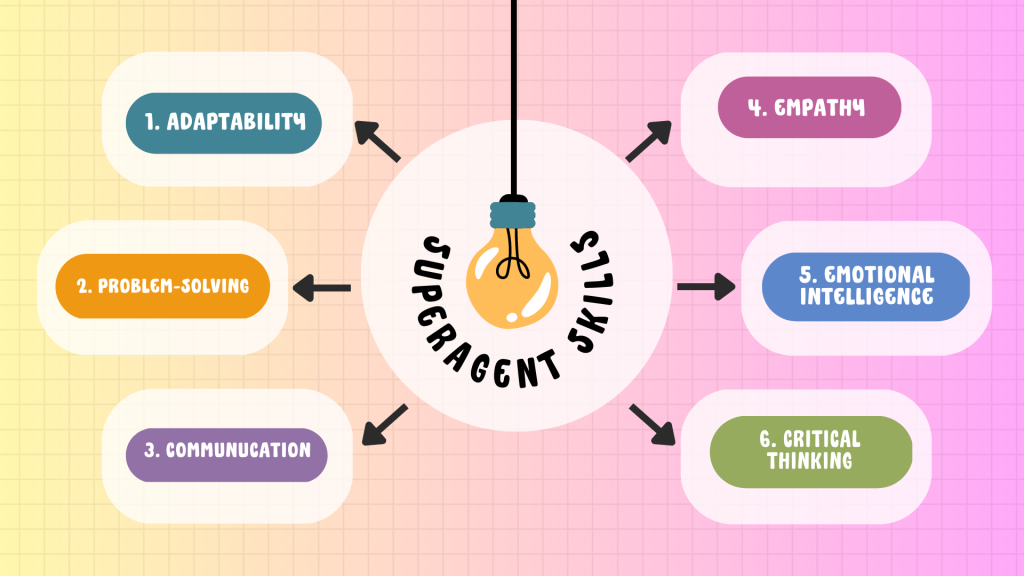Contact centers are undergoing a renaissance. The seismic rise and shifts in customer expectation means companies are now drilling down on experience (rather than cutting costs/saving time) as a true long-term and more sustainable differentiator.
The contact center — a beehive of customer service activity — is at the heart of it all, but so is the all-important role of an emerging hybrid of agents: the contact center superagent.
Businesses experience decline in customer traffic due to poor customer service. A common theme among call centers is a shortage of analysis around agent performance to obtain insights for actionable improvements.
Surely, a product-market fit is crucial to competing, but without the ability to comprehensively evaluate the daily performance of your team, it is difficult to identify areas that require attention for enhancing service quality — especially when it comes to maintaining customer satisfaction with a positive brand perception.
As the perception of customer service evolves, performance measurement is now a must-have.
This Forbes survey found that 68% of customers will spend extra cash after receiving great service from businesses — and it’s not by little: 27% are willing to pay between 10-20% more.
On top of that, a whopping 80% of consumers will give a shout-out to a company (positive word-of-mouth) after a positive experience.
This illustrates the impact of a contact center superagent in a support department — and why it’s important to measure the performance of your contact center agents!
What is the contact center superagent?
In simple terms, the superagent is a skilled upgrade on the typical contact center agent; A highly capable and knowledgeable customer service representative who has a direct impact on customer experience, loyalty, brand image, brand reputation, and the bottom line of a business.
They are ‘T shaped’ (multi-dimensional) customer service professionals—not ‘I’ shaped (trained to perform a specific type of query); boasting the ability to perform complex tasks and handle different customer queries across multiple communication channels without skipping a beat.
However, embracing the concept of a superagent requires more than just a simple adjustment in operational procedures.
It requires a significant shift in company culture, with an increased focus on agent engagement and personalized support, and a thorough evaluation of the technology systems in place to support these new standards and enable them perform at their best.
What are the superagent’s superpowers?
Contact centers are now using tech tools — knowledge bases, intelligent assistants, and other automated tools — to empower ordinary agents to become uber-productive, ultra-skilled generalists.
But what suite of skills distinguishes a superagent from the average frontline agent?

We’ve outlined some below:
Problem-Solving
First on the chopping block is the ability to problem-solve, a must-have skill for any customer service rep. Superagents, however, take it to a higher level. They know when not to follow the script and innovate solutions tailored to specific customer issues and navigate them out of tight corners.
When coupled with critical thinking skills, there’re also able to take on more complex queries using interactive analytics solutions that provide real-time alerts, real-time call monitoring and performance feedback during and after conversions with customers.
Communication
There’re no prizes for guessing that communication skills are super-important for a superagent. With a superagent likely to interface with customers across multiple communication channels, there’s also the need to ensure good grammar and shorthand skills (for channels like live chat & Twitter) to help customers feel at ease.
Empathy
No one wants an agent who’s not able to show warm regard for the customer’s emotions at the other end of the equation.
Empathetic listening is the key to remaining calm and composed in high-pressure situations, diffusing emotionally-charged situations, spotting potential issues or challenges before they escalate, and delivering successful support outcomes.
A show of empathy enables superagents to provide a higher level of service, build stronger relationships, and ultimately helping them become more effective in their roles.
Emotional Intelligence
Emotional Intelligence (EI) takes empathy up a few levels as it involves not only identifying the emotions of others, but also using effective communication to address emotional needs and turn customer sentiment around.
One of the ways to enhance emotional intelligence is through training exercises that encourage reflection on personal consumer experiences while evaluating the EI displayed by the service agents.
You can also create a glossary of recommended words, phrases, and responses that apply to different scenarios and sentiments, allowing agents to have emotionally intelligent dialogues with customers rathe than resort to scripted responses.
This approach helps agents grasp the reasoning behind the recommendations, which enables them to move beyond robotic responses and engage in emotionally intelligent conversations.
Critical thinking
Being a superagent requires analyzing complex issues to find innovative solutions that may differ from the original problem presented.
Critical thinking goes hand-in-hand with innovation and experience. While some believe that experience is necessary to develop innovative ideas, superagents recognize the benefits of not being constrained by traditional methods.
They also get that experience is gained immediately after it is needed. To develop this skill, we must empower agents while providing the necessary support systems, including a well-managed internal knowledge base.
Adaptability
Super agents working in multi-channel, fast-paced environments should show a level of adaptability in delivering successful outcomes.
With the changes in marketplace demand, customer expectations, and technological evolution, the flexibility to adapt could prove a survival skillset when it comes to consitently delivering on customer satisfaction.
With the proliferation of channels, the soaring customer expectation means that superagents are expected to be agile, ‘jack of all trades’. Yet, these soft skills aren’t taught, but are highly transferable, and can be learnt by other agile members of the team through mentoring and shadowing.
How to make a customer service superagent
Making and retaining superagents require more than a bump in paycheck. How do you slap an ‘S’ on chest of any average joe customer service agent and make them the star of show? Here’s how:
Provide communication tools
Communication systems go a long way in shaping response rates.
Your superagent can check the availability of other team members in the center using this medium to share information required to problem-solve, cross-sell, or upsell — in real time.
As a plus, agents do not need to transfer or hold calls which can point to knowledge or training gaps.
Avoid information siloes in your contact center with a streamlined workstream collaboration system where all members of your support team, in and out of the contact center share information.
One way to go about this is to integrate your contact center with your CRM. Thus, super agents get the context behind the conversations — whether across live chat, video chats, audio chats, and other forms of communication.
Offer AI solutions
Human agents are an essential part of the contact center, but let’s face it: they can be expensive.
However, they’re not needed in all customer interactions, and this is where AI customer service solutions can help you focus valuable time on high-value activity and more complex queries that require human intervention.
Take simple questions like “What’s your return policy?” or “How do I sign up for a loyalty card?”. A bot can provide a speedy answer. And for even easier questions, customers can use a self-service options that guides them to the right solution.
But what about those more complex questions that require a human touch? Well, technology can help there too! With the power of AI in cloud-based knowledge management, agents can quickly access and extract the information they need to solve even the most complex of queries.
With natural language processing, customers can speak their questions directly into the phone and get an instant answer on the agent’s screen. All the agent has to do is add a personal touch and voila! Problem solved.
The brain + bot evolution is in full swing. With a mix of human intervention and the assistance of AI, contact centers can provide fast, efficient service while keeping costs down—a win-win for everyone involved!
Build (internal) knowledge tools
If you’ve missed the memo, superagents—thanks to direct interaction with customers—are in the front-end of your brand.
Imagine the blow to your hard-earned reputation if customers get off a call with the impression that your agent is incompetent to handle queries due to insufficient information or a lack of sufficient product training.
For better context, this study by Velaro finds that all it takes for almost 60% of customers to hang up can be as little as a one-minute hold.
Increasing customer expectations can only be matched when agents build capacity in handling products, systems, and customer conversations.
Investing in training and providing an in-depth knowledge base built into your CRM or call center environment is a great way to give agents the confidence they need to answer any query.
Treating contact center staff like the brand ambassadors they are entails giving them the tools + training needed to make customers feel valued and heard.
P.S. You also want to give agents control over their own training, especially when it comes to using tools to meet KPIs. If they feel like they’re stuck with a standard they can’t meet, they’ll likely lose motivation which triggers a serious drop-off in performance.
Enable Task Automation
Much like any other job out there, in a sea of tasks, there’s a scale of preference requiring attention — but due to complexity challenges, some require human intervention more than others.
This is where automation can make life simpler for your agents. Whether reducing the number screens that need handling, implementing screen pops on inbound calls that provide crucial insight based off customer interactions in real time, or providing tools that help log calls without leaving workstations, there’re technologies that put some ease into the process.
Create flexible working conditions
The global cloud contact center as a service (CCaaS) market was valued at $1.07 billion in 2019, And this points to the rapid expansion post-covid. At a compound annual growth rate (CAGR) of 23.5%, by 2028, the CCaaS market is estimated to reach a staggering $10.8 billion.
Like any other industry post-COVID, the contact center industry has suffered a poor reputation in the past, with a rigid, time-driven culture that doesn’t suit the tastes of today’s top talent.
Cloud contact centers are seeing a renaissance now. With a shift from the traditional model by giving agents the freedom to work from anywhere while management teams still have full control with real-time monitoring, shift management, and queue adjustments all done remotely.
Superagents’ activity can benefit a lot from cloud solutions that afford them the freedom to work across geographies. Management teams also have real-time access into agent activities, helping them manage shifts and adjust queues just as in the physical workplace.
Promote self-assessment
Over time, tactics like whisper coaching and silent monitoring (which both support training agents silently at the background during live calls), have been the go-to for giving live feedback to agents to help them improve performance.
Now, tools like text analytics can provide real-time insight into agent performance for multiple agents at the simultaneously.
Reevaluate agent performance metrics
Since forever and a day, Key Performance Indicators (KPIs) have been used to evaluate and enhance the performance of call center agents. And while different metrics exist, specific KPIs work more suitably in meeting customer expectation, achieving overall business objectives, and fulfilling brand promise.
For instance, you would pick KPIs like your customer effort score and customer retention rate to drill into the fact and figures around customer service quality.
Other KPIs like the employee satisfaction metric helps internally assess employee engagement levels, ensuring job satisfaction among staff. This in turn translates into a better experience for customers.
A fresh assessment of the right KPIs can identify weak spots and measure performance, laying the groundwork for improved iterations.
Wrap up
Of course, it takes more than a cape & mask to make a superagent out of a mere customer service representative.
As a company looking to accelerate your customer experience, you need your trusted, strongest soldiers at the frontline of customer interaction; ready and armed with the sharpest chops to impact your customer service team and grow revenue.
This is the underlying reasoning behind the concept of a super agent. Through measurable metrics that gauge performance, training, and effective management, you, too, can create your own league of superagents to elevate customer experience and satisfaction.
Did you like the post?
You might also like:

Surveypal
Everything you need to lead and improve your customer experience. Learn more at surveypal.com, or







